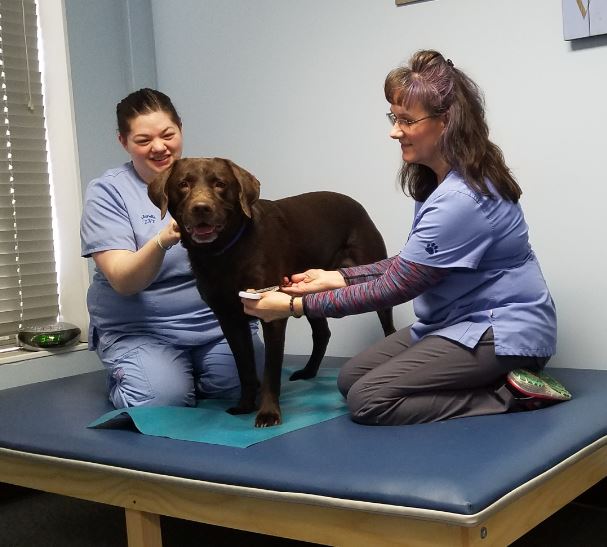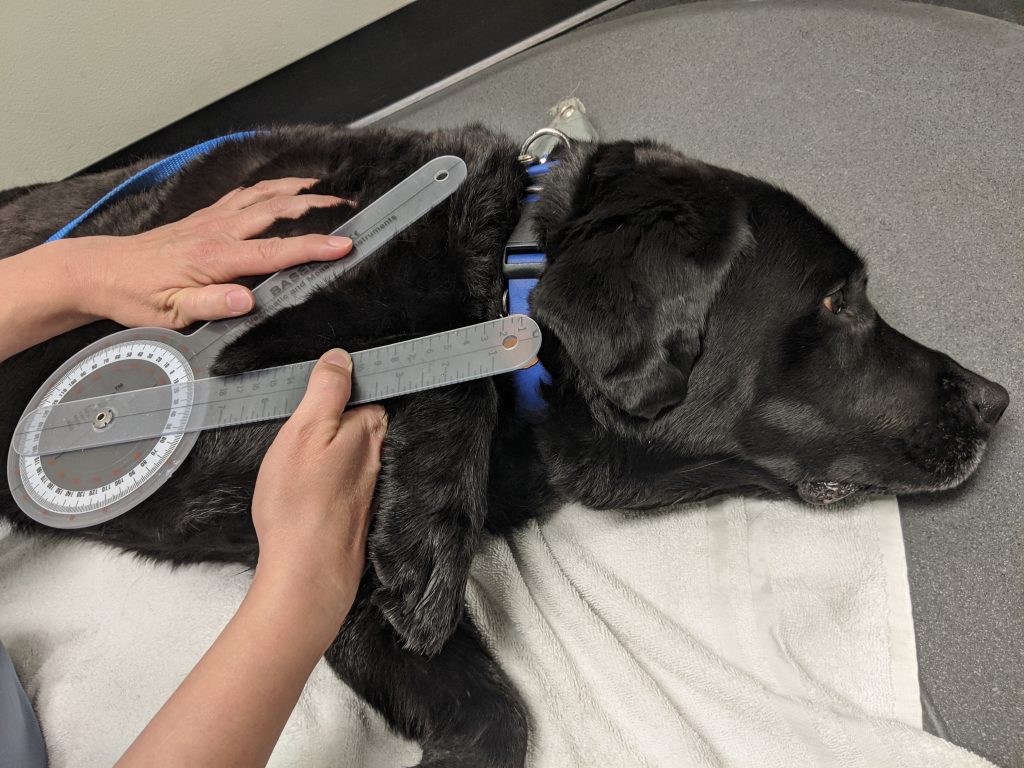Rehabilitation Evaluations- Orthopedic
By Cathryn Adolph, LVT, CCRP, CCFT

Our rehabilitation evaluations involve an extensive physical examination designed to assess your pet from an orthopedic, muscular and neurological standpoint. We do this by assessing your pet’s posture, gait, joints, reflexes, and muscles (soft tissue). This evaluation is quite comprehensive, so we will be covering it in detail over the next several entries. Today we will cover how we evaluate your pet orthopedically.
Orthopedic
Orthopedics is a branch of medicine involving the musculoskeletal system of the body. The musculoskeletal system is comprised of bones, joints, ligaments (connects bones to other bones), tendons (connects muscles to bones), and muscles.
Posture & Gait
Each rehabilitation evaluation begins with observation of your pet’s posture and gait. We take videos to help assess gait and also monitor changes over time. Orthopedic conditions can cause restrictions in range of motion in affected joints. Sometimes these restrictions can actually cause poor posture while standing, sitting, and even laying down.
Gait analysis is a critical aspect of an rehabilitation evaluation, as it is used in the orthopedic and neurologic assessments. Signs of lameness from musculoskeletal origin include (but are not limited to):
- shortening of strides
- decreased flexion/extension of a joint
- “hitches” or abnormal body movement during a step
- decreased to non-weight bearing lameness
Palpation & Goniometry

During the orthopedic exam, our veterinarian will palpate (feel) your pet’s joints by moving them through their comfortable range of motion. They will be feeling for crepitus (popping), slipping, abrupt stops, discomfort/pain, and other abnormal motion.
Goniometry, in the field of medicine, refers to measuring the range of motion of a joint. When compared to normal values, these measurements can identify restrictions or limitations. They also allow us to objectively measure and track progress during a treatment plan.
Diagnostic Tools
Combining gait analysis, palpation, and goniometry can lead to diagnosis of orthopedic diseases such as arthritis, cranial crucial ligament tears, medial shoulder instability, elbow disease, and much more! This is the first of a series of blogs discussing the portions of rehabilitation evaluations for your pets.
